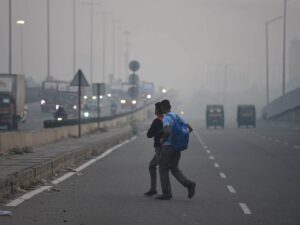As the nation nears the months of its highest pollution levels, the Union Health Ministry has released a new advisory encouraging all states and Union Territories to ramp up their healthcare systems to prepare for the increasing burden due to the illnesses caused by pollution. This directive, put forth under the National Programme on Climate Change and Human Health (NPCCHH), expresses the critical need for strengthened disease surveillance, improved clinics, and post-and clinic-level prevention measures.
Pollution Peaks, Illnesses Do Too.
Air quality in a range of Indian cities falls significantly between September and March, with a commensurate increase in respiratory and cardiac illnesses. Based on this data, the Centre has recommended all government health facilities and medical colleges set up chest clinics for at least two hours everyday over these months. These chest clinics should have a specific focus on the early detection, diagnosis, and management of disease, including asthma, bronchitis and other chronic conditions, related to poor air quality.
Hospitals on Alert Mode
The 33-page guidance document from the Ministry states that hospitals must act swiftly and be specially prepared in case there is an increase in the number of patients. “Hospitals must ensure access to essential medicines, trained personnel, busy hospitals, nebulizers, oxygen and other supportive equipment,” it said. Health-care workers were also asked to provide patient education on preventive efforts — including wearing masks, using air purifier devices, and reducing outdoor activities on any unhealthy air-pollution days.
Connecting Climate and Health
Similarly, the advisory also signifies an increasing governmental awareness of how climate change and pollution influence public health and disease. Under NPCCHH, states have been endeavored to obtain real-time data, identify areas of elevated risk, and build linkages among environmental departments, including health, to encourage integrated approaches that not only respond to disease outbreaks but also consider the underlying determinants.
A Move to Cleaner, Healthier Futures.
As the Centre advocates for policies that are taking action at the community level, they want to ensure that everyone is protected from risk during the period of pollution. The ultimate solution is to lower emissions and mitigate the factors contributing to poor air quality, but this represents an important initiative to protect public health and increase the health systems’ resiliency to climate change.












More Stories
Neurologist Warns: These 3 Everyday Habits Could Be Silently Damaging Your Brain
Fitness Trainer Reveals the Body’s Most Underrated Weapon Against Diabetes—‘Muscle Can Soak Up Glucose Even Without Insulin’
Global Obesity Crisis: New Weight-Loss Drugs Bring Hope, But Prevention Still Holds the Key